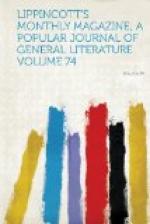Whilst in the North he found another mode of making hay whilst the sun shone. Soon after his arrival he bought a lease of the bishop of Durham of the manors of Gateshead and Wickham, and worked the collieries on these properties to such good purpose that, on coming up to London in 1580 he brought with him two horse-loads of money, and was reputed to be worth fifty thousand pounds—a great sum in those days.
About 1582 he increased his wealth by marriage, and commenced business as a merchant in London. His large amount of ready money—a commodity especially scarce in those days—soon enabled him to carry on very large commercial operations; and amongst other sources of wealth he probably derived considerable profit from his office of victualer of the navy. In 1590, finding himself without prospect of children, he withdrew from business, and retired to the country, having already invested largely in real estate. Although very frugal, there are sufficient evidences of his liberality to the poor on his property; and it seems not improbable that his charitable schemes now began to take definite form, for after his death a credible witness stated that Sutton was in the habit of repairing to a summer-house in his garden for private devotion, and on one of these occasions he heard him utter the words: “Lord, Thou hast given me a large and liberal estate: give me also a heart to make use thereof.”
About 1608, when he had quite retired from the world, he was greatly exercised by a rumor that he was to be raised to the peerage—an honor which it was contemplated to bestow with the understanding that he would make Prince Charles, subsequently Charles I., his heir. This was a court intrigue to get his money, but an urgent appeal to Lord Chancellor Ellesmere and the earl of Salisbury, prime minister, appears to have put an end to trouble in the matter. He died on the 12th of December, 1611, at the age of seventy-nine, leaving immense wealth, and on the 12th of December, 1614, his body was brought on the shoulders of his pensioners to Charter-House Chapel, and interred in a vault ready for it there, beneath the huge monument erected to his memory.
“The death-day of the founder is still kept solemnly by Cistercians. In their chapel, where assemble the boys of the school and the fourscore old men of the hospital, the founder’s tomb stands, a huge edifice emblazoned with heraldic decorations and clumsy, carved allegories. There is an old hall, a beautiful specimen of the architecture of James’s time. An old hall? Many old halls, old staircases, old passages, old chambers decorated with old portraits, walking in the midst of which we walk as it were in the early seventeenth century. To others than Cistercians, Gray Friars is a dreary place possibly. Nevertheless, the pupils educated there love to revisit it, and the oldest of us grow young again for an hour or two as we come back into those scenes of childhood.




